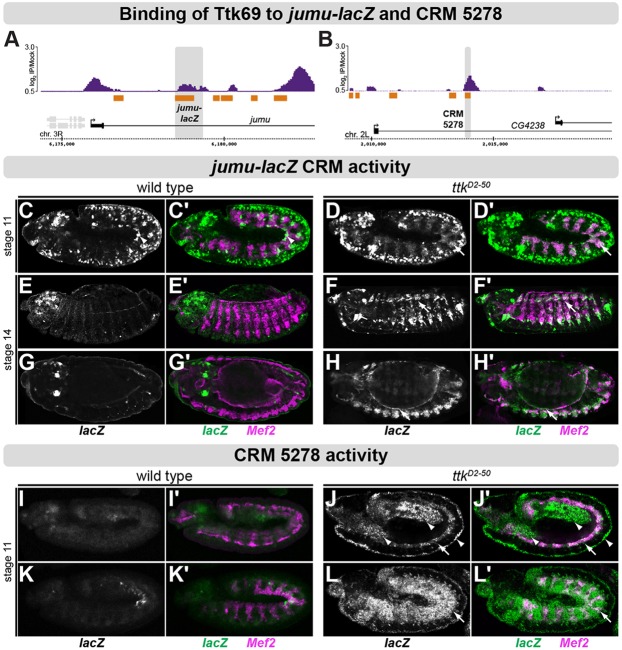Fig. 5.
Ttk69 is essential for restricting CRM activity across cell and tissue types. (A,B) Ttk69 binding [normalized log2 ChIP signal (IP/mock)] within the jumu (A) and CG4238 (B) loci. Mesodermal CRMs indicated in orange and cloned regions in gray. (C-H) Double fluorescent in situ hybridization against jumu-lacZ (gray, green) and Mef2 (magenta) in wild-type and ttkD2-50 mutant embryos. At stages 11 and 14 in wild-type embryos (C,C′,E,E′,G,G′), no mesodermal activity is detected (with the exception of caudal VM, arrowhead). (D,F,H) In ttkD2-50 homozygous mutant embryos, expression of jumu-lacZ is present in somatic mesoderm (arrows) at stage 11 (D,D′) and 14 (F,F′) and in VM (arrows) at stage 14 (H,H′). (I-L) In vivo activity of CRM 5278-lacZ (gray, green) and Mef2 (magenta) in wild-type and ttkD2-50 mutant embryos. (I,I′,K,K′) In wild-type embryos, CRM 5278-lacZ is active only in the caudal VM and head region at stage 11. (J,J′,L,L′) In ttk69-deficient embryos, 5278-lacZ is active in multiple tissues, including visceral and somatic mesoderm (arrows), ectoderm and endoderm (arrowheads). Embryos are oriented with anterior to the left and dorsal top. All embryos are shown in lateral views, with the exception of G and H, which are dorsolateral.

